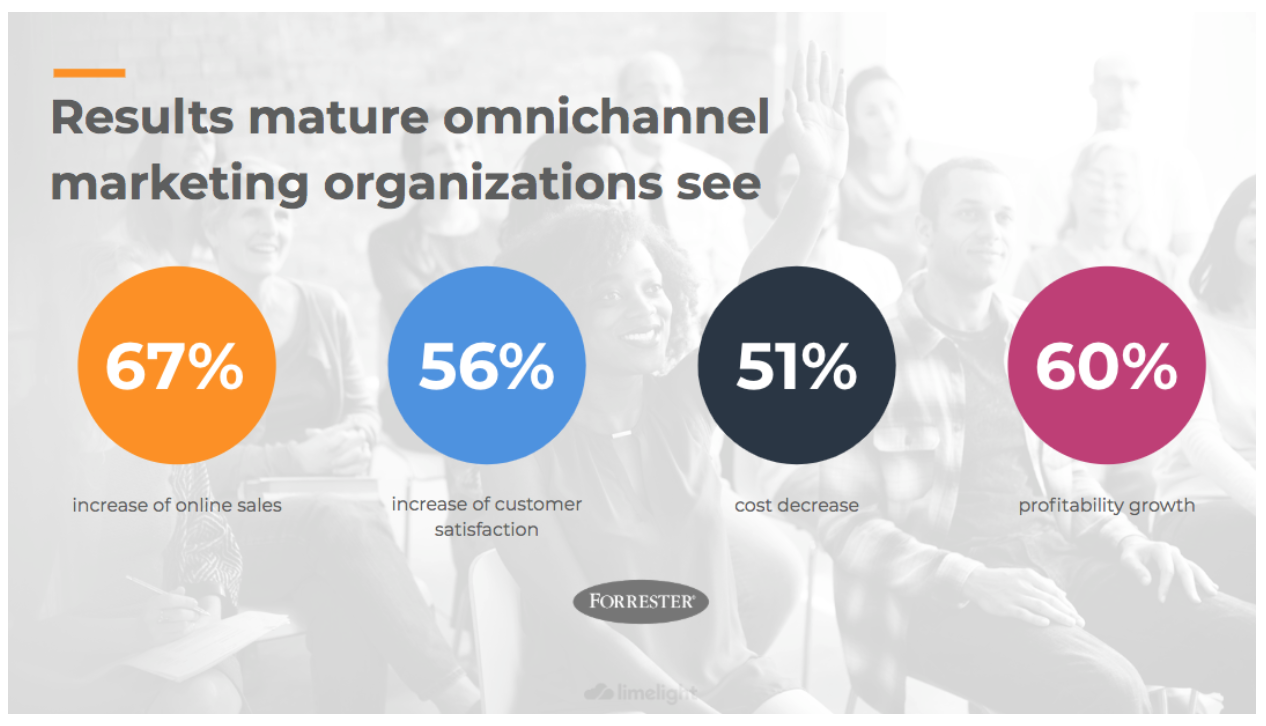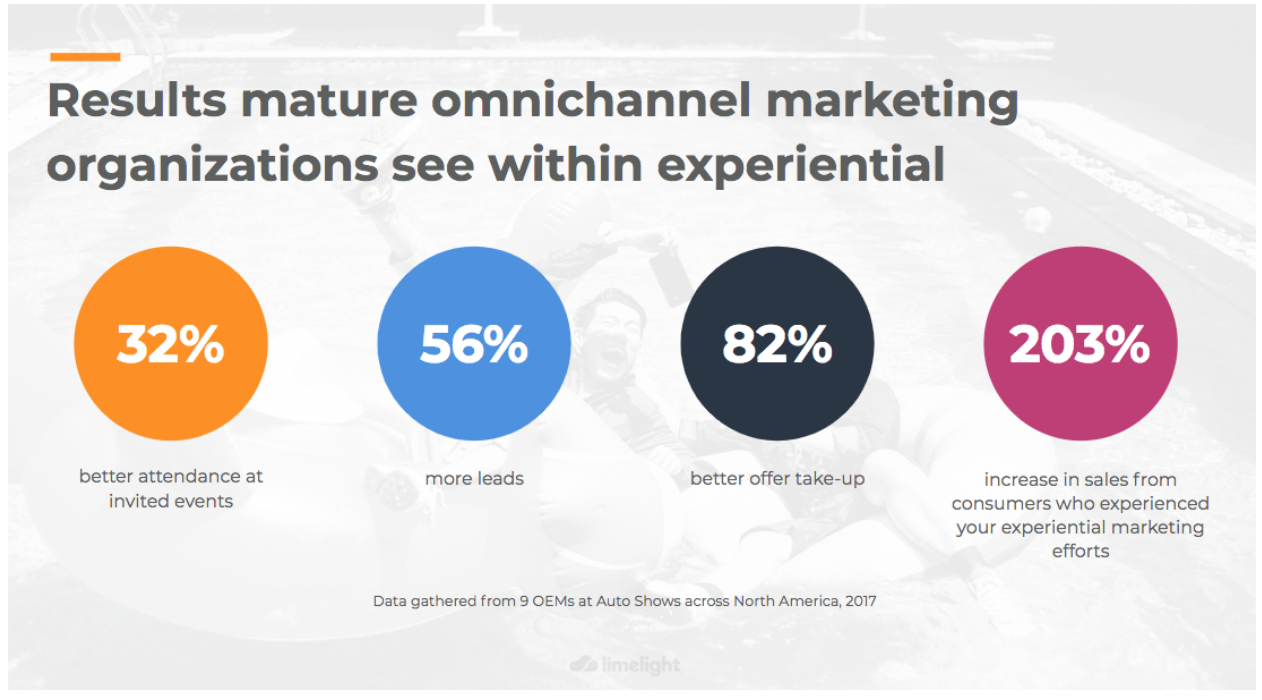The Future of Experiential Marketing: What Successful Organizations Do [Executive Research]
.png?width=50&name=download%20(1).png) By
Julia Manoukian
·
3 minute read
By
Julia Manoukian
·
3 minute read
Successful experiential marketing looks a lot like a successful omnichannel consumer journey strategy: all interactions between consumers and the brand are consistent. That means the right message to the right person, at the right time.
Consumers don't see channels—they simply have relationships with brands. It's up to brands to deliver on that. To wow consumers, many companies are realizing they must take their omnichannel strategy to the next level. That includes a targeted, savvy experience both online and offline.
In their report on omnichannel customer engagement, Deloitte explains it best:
“For example, when a customer customizes, builds, and prices-out a small SUV on the OEM Tier-1 website and later visits a dealer website to search inventory, ensure the experiences are consistent and connected. The prior vehicle configuration from the Tier-1 site should inform what the dealer site shows: the current offer on that SUV, available inventory, and customer reviews. Each part of the digital ecosystem, from OEM web and social channels to dealer channels and third-parties, should be connected, and the content should be orchestrated to work together to move customers through the process and build confidence and consideration for their purchase.”
Transforming your experiential marketing strategy doesn’t require you to unplug all that you’re doing now and start over. Instead, it’s a complementary strategy that works alongside your existing marketing processes—sharing resources, data, tools and technologies with them.
Ask yourself:
- How do you manage your XM programs? How about marketing at dealerships?
- How do you track the performance of leads? How do you hold dealers accountable?
- What would happen if you don’t meet your customers’ expectations?
- What if you could see/route all leads from all events in real-time?
What Does Successful Experiential Marketing Look Like?
Going back the Forrester-backed framework we used to define why experiential is hard to run and manage, here is what we found they do to succeed:
| Maturity Criteria | Maturity level |
| Strategy and Organizational Structure |
|
| Customer Identification |
|
| Targeting for Engagement |
|
| Measurement and Attribution |
|
| Budgets and Resources |
|
| Project Management and Execution |
|
As a result, brands can deliver the right message, to the right person, at the right time, every time.
- Touch points are consistent
- Personalization across the experience
- No manual processes on end-users
- Digital and automation leveraged end-to-end. No paper & pen, etc.
Ask yourself:
- What if there was a different way of managing your XM programs?
- What if you could capture and track the performance of leads in real-time?
- What if you could scale a consistently experience across experiential and online touch points?
According to Forrester, “Omnichannel customers are significantly more valuable and more profitable compared to single channel customers.”


But beyond the numbers, there are some other benefits of experiential marketing you can expect by evolving your experiential marketing efforts.
- Complete visibility into experiential performance: With insight into every level of experiential, you can map KPIs to the customer journey, and more easily determine modelling for ROMI (return on marketing investment). This 360-degree view also allows you to more confidently prove ROI, and improve performance and customer loyalty. Your life doesn’t just become easier, you bolster Marketing’s credibility among the C-suite, and arm your team with the ability to adapt to and test innovative digital strategies.
- Streamlined and digitized operations: Strategy and organizational structure are coordinated against a single view of the customer journey. An integrated approach to technology makes experiential easier to run, manage and measure. Data and reporting is available at your fingertips, across channels, departments and tiers. Ultimately, you improve internal efficiencies and reduce overall operating costs.
- Great consumer experience: You’re part of a brand that gives consumer the experience they expect and deserve. Mature omnichannel brands can ultimately deliver polished and consistently personalized experiences. They leverage, for instance, digital check-ins welcoming customers by name and pre- and post-event outreach via social and communications that are personal, and feel just as premium.
Just like most digital transformation efforts, there is no silver bullet for success. But if you understand the value digitally transforming your face-to-face experiences can bring, and invest in preparing your company for change, you'll be rewarded with big wins.

